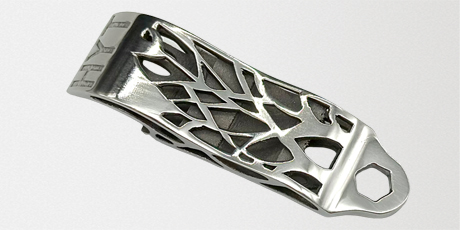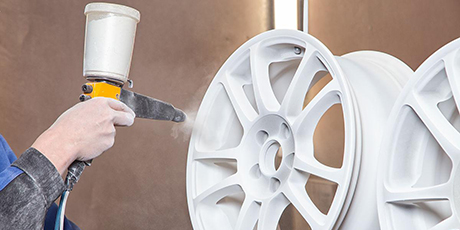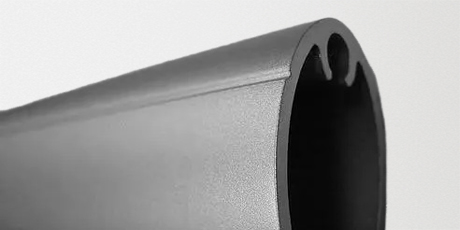
Quick Look
| Density | Melting Point | Thermal Conductivity | Electrical Resistivity | Coefficient of Expansion |
|---|---|---|---|---|
| 6.8-7.8 g/cm³ | 1150-1300°C | 36-54 W/m·K | 0.7-1.0 µΩ·m | 10-14 µm/m·K |
About the Material
Advantages:
High Strength: Cast iron provides excellent mechanical strength, suitable for heavy-duty applications.
Good Wear Resistance: Cast iron's hardness makes it resistant to wear, extending the lifespan of components used in harsh environments.
Vibration Damping: The high damping capacity of cast iron helps in reducing vibrations, which is beneficial for machine tools and automotive components.
Cost-Effective: Cast iron is a cost-effective material, especially for large components requiring high durability.
Complex Geometries: Rapid Investment Casting allows for the creation of intricate cast iron components that would be difficult to produce through traditional casting methods.
Limitations:
Brittleness: Cast iron is inherently brittle, which limits its use in applications requiring high impact resistance.
Weight: Cast iron is relatively heavy, which may be a limitation in applications where weight reduction is a critical factor.
Porosity Issues: The casting process can result in porosity, which may require additional processing or testing to ensure part integrity.
Surface Finish: The surface finish of cast iron parts may require additional machining to meet quality standards for specific applications.
Chemical Properties Table
Element | Iron (Fe) | Carbon (C) | Silicon (Si) | Manganese (Mn) | Sulfur (S) | Phosphorus (P) |
Typical Percentage (%) | 90-94 | 2.0-4.0 | 1.0-3.0 | 0.1-1.0 | ≤ 0.1 | ≤ 0.1 |
Machining Properties Table
Property | Machinability Rating | Cutting Speed (m/min) | Tool Wear Resistance | Coolant Requirement | Surface Finish Quality |
Value | Good | 60-120 | High | Optional | Moderate |
Rapid Investment Casting Cast Iron Design Parameters
| Maximum Bulid Size (mm) | Minimum Wall Thickness (mm) | Minimum Assembly Gap (mm) | Tolerance | Minimum End Mill Size (mm) | Minimum Drill Size (mm) |
| 600x600x600 | 1 | 0.1 | 0.30% | / | / |
Industry Applications and Case Studies for Rapid Investment Casting Cast Iron:
Automotive Industry:
Application: Production of engine blocks, brake discs, and suspension components.
Case Study: An automotive manufacturer used Rapid Investment Casting to produce complex cast iron brake discs, improving performance and durability under high temperatures.
Industrial Machinery:
Application: Manufacturing of machine tool bases and heavy-duty gears.
Case Study: A machinery company utilized cast iron for machine tool bases, benefiting from the material's vibration damping properties to enhance precision.
Construction Equipment:
Application: Production of parts for construction machinery such as excavator arms and structural supports.
Case Study: A construction equipment manufacturer used cast iron to create durable and cost-effective components for excavators, improving their longevity in harsh environments.
Piping and Valves:
Application: Production of valves, pipes, and fittings for water and gas infrastructure.
Case Study: A piping manufacturer used Rapid Investment Casting to produce complex valve bodies, ensuring high strength and reliability for water distribution systems.
Frequently Asked Questions (FAQs) about Rapid Investment Casting Cast Iron:
What are the benefits of using cast iron in Rapid Investment Casting?
Cast iron offers high strength, good wear resistance, vibration damping, and cost-effectiveness, making it suitable for heavy-duty applications.
Is Rapid Investment Casting suitable for high-volume cast iron production?
Rapid Investment Casting is most cost-effective for prototyping and low to medium production volumes. For very high volumes, sand casting may be more economical.
What industries benefit from cast iron in Rapid Investment Casting?
Industries such as automotive, industrial machinery, construction equipment, and piping benefit from cast iron's strength, durability, and vibration damping properties.
How does cast iron compare to steel in terms of cost and performance?
Cast iron is generally more cost-effective than steel and offers better vibration damping but is more brittle, limiting its use in impact-prone applications.
What are the limitations of using cast iron in Rapid Investment Casting?
Limitations include brittleness, weight, potential porosity, and the need for additional machining to achieve a smooth surface finish.
What are the typical applications for cast iron in Rapid Investment Casting?
Typical applications include automotive engine components, machine tool bases, construction machinery parts, and valves for piping systems.
How can porosity in cast iron castings be minimized?
Proper control of the casting process, including degassing and using high-quality molds, can help reduce porosity in cast iron castings.
Is cast iron suitable for high-impact applications?
Cast iron is generally not suitable for high-impact applications due to its brittleness. Ductile iron may be a better choice for such requirements.
Finishing Options












Parts Made by AutofabX

